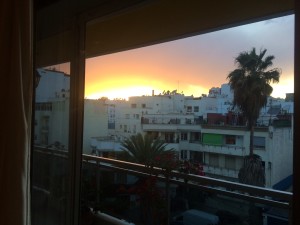I am from a small town called Sunbury, located in central Pennsylvania. Sunbury is about an hour and a half away from State College, and about an hour away from Harrisburg. The downtown area of Sunbury is essentially one street, appropriately called Market Street. Sunbury is a relatively small community of about 10,000 people all within about 2.5 square miles. Since it is so small, a lot of people choose to walk instead of drive, especially during spring and summer months. I have lived there my entire pre-college life, and have a lot of fond memories. I waited a year to get my driver’s license because I didn’t feel the need for it. I was easily able to walk to and from school, or to any of my friends houses. Most people felt the same way and you could easily run in to people you knew while just walking around.
One of the cities discussed in the module that relates to my city is Copenhagen. Both Copenhagen and Sunbury have made significant modifications to the city in order to promote walking and biking. Like Copenhagen, Sunbury has created new and beautiful walkways along the Susquehanna River that extends the entire length of the city, as well as reducing and eliminating lanes of traffic in order to build bike paths. These additions have definitely calmed the traffic in those areas, but not to the extent that Copenhagen has.
Another city that resembles Sunbury is the Jamaica Plain in Boston. The Jamaica Plain is a streetcar suburb, which can also describe most areas of Sunbury. While some people have their own driveways or garages, most people park along the street. The streets in Sunbury are large enough to accomodate this, as well as bike paths, and sidewalks. Even though Sunbury is not very big, it makes good use of its land by having houses close to one and another along very large streets. There is no bus like in the Jamaica Plain though, since most people walk, drive, or bike to where they need to go. It does have trains that travel through the main parts of town however, as well as two train stations.

